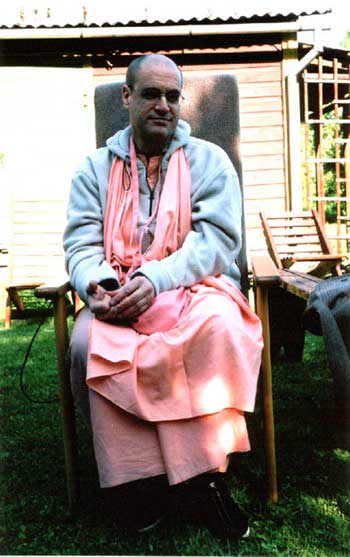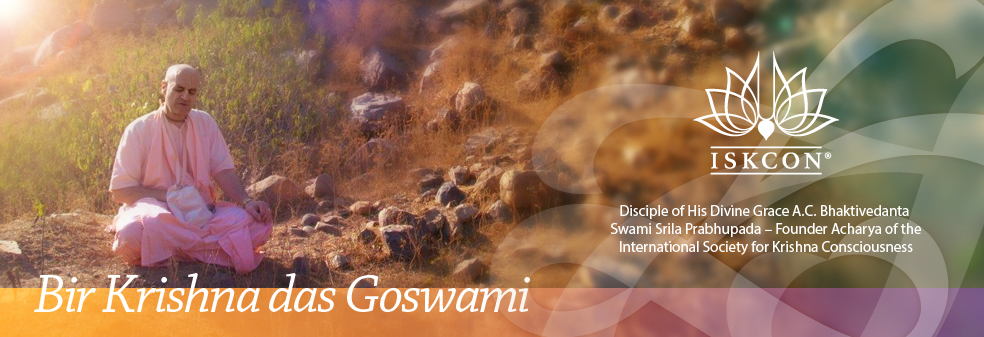
My specialty is developing Vaisnava communities. I am trying to form communities based on the example of community that we have in Fiji. Devotees form extended families. All the devotees are like a family. If someone needs
help, the devotees go to help; maybe financially, or if someone is building the house . . . in every way. Devotees invite each other over for prasadam, which is very nice. Women know how to cook, and they always have guests. Vedic culture is based on cooking. In the Upadesamrita of Rupa Goswami, there are descriptions of six kinds of love. Prabhupada says that our movement will spread because of these six symptoms. This is culture; it is in the sastra. People share everything, and sharing starts with prasadam. Prabhupada said that family life means that before sitting down to eat, a householder goes out in the street and calls out to see if there is anyone who is hungry. Prabhupada stressed that this is a culture of sharing, especially sharing Prasadam (food). This actually builds community; a model of sharing, a model of helping each other. Many people join because of social structure – because of friends because they like people who are in the Hare Krishna movement. Preaching is also a kind of sharing, the sharing of philosophy with people, rather than “preaching”. It is sharing of Krishna consciousness.We need a nice, warm family atmosphere if we want to make devotees. It is essential to build a community to make a large number of devotees. Taking over the Earth should be our goal; Prabhupada was thinking big.
In many cities where they had a temple, the whole Krishna consciousness society became centered on the temple only. They installed more Deities than there were devotees in the temple. In America there are many more Deities than there are devotees. Then the temple becomes a burden, and people forget about the preaching, forget about the community. They preach against the community to maintain the temple. They preach to the devotees in the temple not to get married because they think that those devotees have to stay in the temple, collect money, do this, and do that. In some places the temple is actually slowing down the spreading of Krishna consciousness. With the development of congregation, temples will naturally come about. Temples will manifest naturally when there is a congregation, and when members of congregation give part of their income.
How to form a community or build a community? The Bhakti-vriksa program is good for that. A family atmosphere, a group atmosphere comes when there are small groups of 10-15 people maximum.
How to start a community? With a small group of 10 to 15 people and regular association. Every member of the small group has to have some responsibility for others. Responsibility means that they have some responsibility towards others. Just like in the Chowpatty temple’s “Mentor Program”, every person is responsible for someone else. “Each one teach one.” We are actually responsible for one another. Personal relationships are based on feeling for others and being responsible for them. This is how to start a community. We do not need the temples to expand. Temples are places where communities meet and worship together, but a building will not make devotees. The greatest treasure that we have in our movement is its people. There is no stability without community.
A community is mainly formed by grihastas since they are the stomach of the society. Brahmacaries are the legs, grihastas are the stomach, sannyasis are the head. In varnasrama culture if the stomach does not function properly, everything else becomes disturbed. Ninety nine percent of the devotees become grihastas, and this is an asram where we need to concentrate on with regard to developing communities. Householders are stable. Brahmacaris and sannyasis are not stable. They may be stable spiritually, but not materially.
Comments are closed. Please check back later.




Comments are closed. Please check back later.